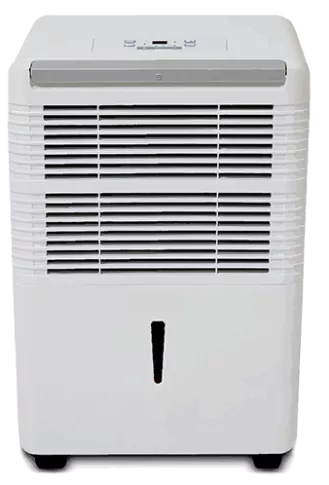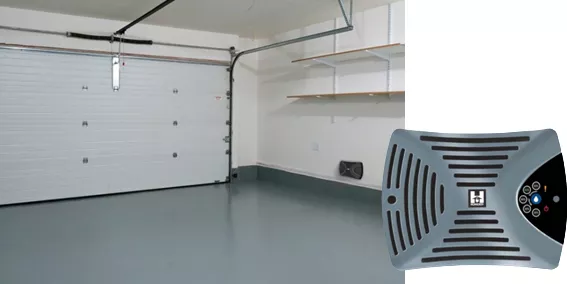Does stepping into your garage feel like you’re entering a sauna? That hot, humid air can be a sign of a problem. Or, maybe you’re walking out in the winter, and you feel musty, damp air all around you. Again, that’s an issue.
Unwanted humidity in your garage can lead to a host of issues. It can cause damage to precious items stored there. It can cause mold and mildew, and more. In most cases, the humidity is coming from the environment around your home, but how is it getting in?

How Humidity Enters the Garage
There are several ways that humidity can enter your home, including the following:
- Your garage insulation may be lacking.
- The garage door insulation could be missing or lacking.
- The door could be allowing water to enter the space.
- If you’re storing firewood in your garage, the wood is letting moisture into the space.
- If you have a washer and dryer installed in the garage, you may have a loose‑fitting dryer vent pipe that’s pumping damp air into the room.
- You may be storing liquids in the garage in containers that don’t have airtight lids.
- You may have a poor seal on your garage floor.
- You may be using cardboard boxes for storage, which hold moisture and then release it into the air as the humidity level drops.
- You may be parking your car in the garage. Rain, ice, snow – it all leads to moisture in the air.
- You may not have cleaned out your catch basin. Over time, water and mold can accumulate here, leading to high humidity and bad smells.
Does one or more of these items seem familiar? If so, you may have found the cause of your humidity problem. Now it’s time to measure the level.
Place a hygrometer in your garage and leave it there for 24 hours. You should then have an accurate reading. If you don’t have a hygrometer, you can check the garage windows during the winter. Look for a line of moisture or ice near the bottom of the glass. If you see this, then you certainly have high humidity.
Taking Steps to Reduce Humidity
So, now that you know why you have high humidity and have a decent idea of how much is present, it’s time to think about some ways to reduce the level. Understand that there are two basic elements necessary to resolve high humidity.
1. Garage Insulation: First, your garage should be insulated. If it’s not, then your efforts to control humidity and temperature are going to fail.
2. Garage Door: Your garage door is the fourth wall of the space. It should have a thermal resistance factor of at least R‑12, and that should be achieved by injecting polyurethane foam between the inner and outer surfaces of the door.
Another factor to consider with the garage door is how weathertight it is. Take a look around the exterior perimeter weatherstripping. Is it present on both sides, the top, and the bottom? Does it overlap the head of the door by a minimum of 1.5 inches? Check the bottom of the door – does the weatherstripping keep water out when it rains?
You’ll also want to consider the pitch of the threshold. Does it angle outward to prevent water ingress? If not, then you could be allowing water to run into the garage.
So, now that you know a bit more, it’s time to look at some of the options available to you for controlling humidity levels. Before you do anything, though, make sure that you have fully insulated your garage. Otherwise, these steps aren’t going to do you much good.
If you’re just looking for a little humidity relief in the short‑term, consider cracking the garage door about two inches and then opening another door or window. This will create a flow of air that moves moisture out and dry air in. You can augment that with a small fan to help move air faster.
Another option is to use a home dehumidifier. Put it in the garage and then leave it running for at least 24 hours. This should give you a drop in humidity levels between five and eight degrees. With that being said, if you need longer‑term humidity control, it might be worth investing in a commercial dehumidifier. They can be installed in your existing heating system and can dramatically improve comfort.

Yet another option is a humidity vent that can be installed in the wall of the garage. It measures about 9 x 6.5 x 4 inches and vents humidity into your home’s ductwork.
What about garage door vents? These actually do very little for humidity. However, they can help with exhaust and bad smells.

Time to Replace the Garage Door?
Is it time to replace that aging, leaky garage door? If you live in the Ottawa area, you can contact us toll‑free at 613‑749‑2138. We would love the chance to discuss your situation and explore the options available to you in terms of new garage doors. If you want, you can also email us for a free quote, or just come by and see us in person. To see the variety of garage doors we offer and how they would fit on your home, use our design centre, or go to our image gallery to get an idea of what we’ve been able to do for other customers.

Add new comment